za'atar
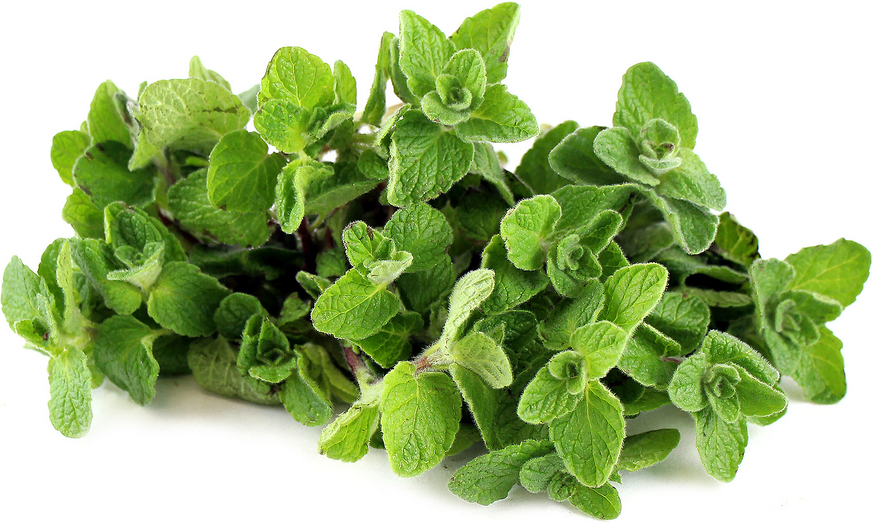
Za’atar is both the name of a Middle Eastern herb and a spice blend made from that herb, mixed with other ingredients like sumac, sesame seeds, and salt. The herb itself belongs to the oregano family and is known for its robust, earthy flavor. When blended with other spices, Za’atar becomes a versatile seasoning used to enhance the flavor of various dishes, from meats and vegetables to breads and dips. The blend is a staple in Middle Eastern cuisine, treasured for its unique combination of tangy, nutty, and savory notes.
1. Size:
- As a dried herb blend, Za’atar typically has a coarse texture with small, ground particles of the herbs and spices. When freshly made, the herbs can vary in size but are usually finely chopped or ground.
2. Color:
- The color of Za’atar can vary depending on the exact blend but generally ranges from light green to dark brown, with the sesame seeds adding a lighter, contrasting hue. The presence of sumac often gives it a reddish tint.
3. Texture:
- Za’atar has a slightly coarse and grainy texture due to the mixture of dried herbs, sesame seeds, and spices. When used as a topping, it adds a pleasant crunch to dishes.
4. Fragrance:
- Za’atar has a distinct, aromatic fragrance that is herbaceous, slightly tangy, and nutty. The blend’s aroma intensifies when it’s toasted or mixed with olive oil, releasing its savory, earthy notes.
5. Uses:
Za’atar is a versatile seasoning used extensively in Middle Eastern cuisine. It is commonly sprinkled over flatbreads like Manakeesh, mixed with olive oil as a dip, or used as a seasoning for meats, vegetables, and salads. Za’atar can also be mixed into doughs or used as a rub for roasted or grilled dishes.
In some cultures, the herbs in Za’atar, particularly thyme, are brewed into a tea that is believed to have digestive benefits and a calming effect.
The antioxidant properties of some of the herbs in Za’atar, such as thyme and oregano, make it a natural preservative, helping to extend the shelf life of foods it is mixed with.
6. Habitat:
- The herbs used in Za’atar, particularly thyme and oregano, thrive in the Mediterranean climate, characterized by hot, dry summers and mild, wet winters. These herbs are often grown in rocky, well-drained soils and are commonly found in the wild in the mountainous regions of the Middle East.
7. Cultural and Spiritual Significance:
Za’atar has been used in Middle Eastern cuisine for centuries, often passed down through generations as a family recipe. It is not just a spice blend but a symbol of hospitality and tradition. In some cultures, it is believed that eating Za’atar sharpens the mind and strengthens the body.
In many parts of the Middle East, Za’atar is more than just a spice—it is a cultural identifier. The blend varies from region to region, with each community having its unique version that reflects its history and tastes.
Spiritual Properties
Protection and Cleansing: The herbs in Za’atar, especially thyme, have long been associated with protection and spiritual cleansing. Thyme was often burned as an incense to purify spaces and ward off negative energy.
Enhancement of Mental Clarity: In traditional beliefs, consuming Za’atar was thought to enhance mental clarity and focus, making it a favored food for scholars and those engaged in intellectual pursuits.
Medicinal Properties
Antioxidant: Za’atar is rich in antioxidants, particularly due to the thyme and oregano in the blend. These antioxidants help to protect the body from oxidative stress and may have anti-aging effects.
Digestive Aid: The herbs in Za’atar, especially thyme, are known for their digestive properties. Consuming Za’atar may help relieve indigestion, bloating, and gas.
Anti-Inflammatory: The components of Za’atar have anti-inflammatory properties that can help reduce inflammation in the body. This makes it beneficial for those with conditions like arthritis or other inflammatory disorders.
Allergic Reactions
Za’atar is generally safe for consumption. However, individuals with specific allergies to any of the herbs in the mix (such as oregano, thyme, or sesame) should exercise caution.
Sesame Allergy: Individuals with a sesame allergy should avoid Za’atar, as the blend commonly contains sesame seeds, which can trigger allergic reactions such as hives, swelling, or difficulty breathing.
Herb Sensitivity: Some people may be sensitive to the herbs in Za’atar, particularly oregano and thyme. This sensitivity can manifest as skin irritation, especially if handling the fresh herbs, or gastrointestinal discomfort if consumed in large quantities.
Stomach Upset: While generally safe, consuming large amounts of Za’atar could potentially lead to stomach upset, including nausea or diarrhea, especially in individuals with sensitive stomachs.
Blood Pressure Effects: Some components in Za’atar, particularly thyme, may have a mild effect on blood pressure. Those on blood pressure medication should use Za’atar in moderation and consult with a healthcare provider if concerned.
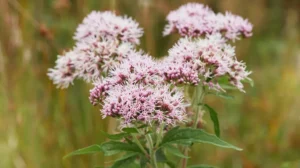
Valerian Root
Valerian Root Valerian Root, derived from the Valeriana officinalis plant, is a well-known herb used for its calming and sedative properties. It is commonly utilized
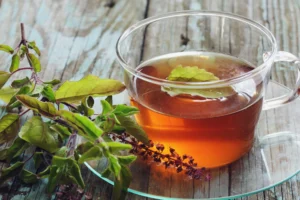
Holy Basil (Tulsi) Protection Tea
Holy Basil (Tulsi) Protection Tea A sacred tea known for its spiritual protection and ability to promote inner strength, clarity, and resilience. Ingredients: Holy Basil
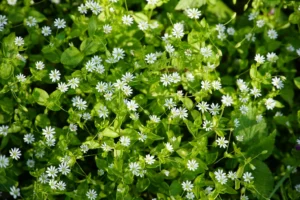
Chickweed
Chickweed Chickweed is a small, delicate annual herb that thrives in cool, moist environments. It is commonly found in gardens, lawns, and meadows, often considered

Kava
Kava Kava (Piper methysticum) is a tropical evergreen shrub native to the South Pacific islands. The roots of the Kava plant are traditionally used to
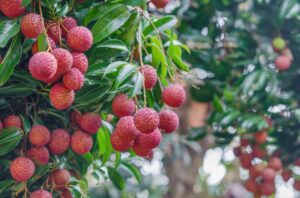
Lychee Berries
Lychee Berries Lychee Berries are tropical fruits known for their sweet flavor and distinctive appearance. They are highly valued in culinary applications and traditional medicine
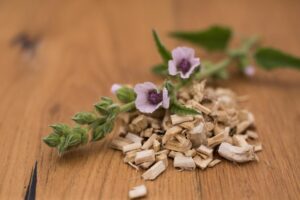
Marshmallow Leaf & Root
Marshmallow Leaf & Root Marshmallow Leaf and Root come from the Marshmallow plant (Althaea officinalis), a perennial herb known for its soothing properties. Both the